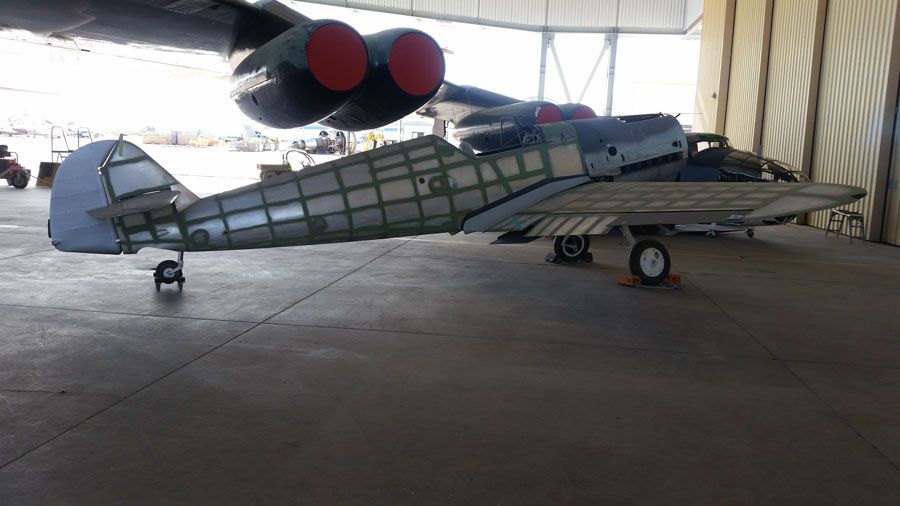Messerschmitt Bf109F-4
This aircraft is not currently on public display.
The Messerschmitt Bf 109 was the backbone of the German Luftwaffe’s fighter force in World War II. While far from perfect the 109 was one of the best fighters of the immediate pre-war period, being light, fast, and maneuverable. The aircraft remained competitive through the end of the war and with smaller air forces into the 1950s. Designed in 1934 by Willy Messerschmitt for the Bayerische Flugzeugwerke (Bavarian Aircraft Works) in response to a request by the new Luftwaffe for a modern interceptor. The first prototype of the Bf 109 flew in March 1935 and quickly outpaced its competitors for a production contract. The 109 first saw combat with Germany’s “volunteer” Condor Legion in the Spanish Civil War where the small numbers of aircraft used showed they were far superior to any other fighter available at the time and led Germany’s neighbors to speed the development of new aircraft such as the Spitfire and Hurricane to combat it.
Continual development during World War II kept the Bf 109 competitive even as newer aircraft designs flowed out of the factories of Germany’s enemies. The Bf109F model incorporated a more powerful engine and improved aerodynamics into what many consider to be the best of the 109 versions. First flown in 1939 and introduced into production in 1940 the “Friedrich” was produced through the middle of 1942 and was the primary Luftwaffe fighter of 1941 and early 1942. The Bf 109F-4 version was basically identical to the earlier F-2 except for an improved 20mm cannon with a better rate of fire and more ammunition than the earlier variant.
Service History:
Built by Messerschmitt at Wiener-Neustädter Flugzeugwerke and delivered to the Luftwaffe in December 1941.
Early 1942 Assigned to the Jagdgeswader 5, Gruppe II, 6 Staffel at Petsamo, Finland and painted with the identification number “Yellow 4.”
October 22, 1942 While being flown by Lt. Theodor Weissenberger on an escort mission the aircraft suffered an engine failure. Lt. Weissenberger was able to glide the aircraft back to German held territory whereupon he abandoned the aircraft and returned to the ground by parachute. He returned to his unit a few days later and went on to become one of Germany’s leading fighter aces with a total of 208 credited victories.
1990s Wreckage of the aircraft was recovered along with several other Bf 109s from eastern Finland and imported into the United States for restoration.
August 2016 The partially restored aircraft is acquired by the Pima Air & Space Museum, Tucson, Arizona.
Wingspan | 32 ft. 6 in. |
Length | 29 ft. 6 in. |
Height | 8 ft. 6 in. |
Weight | 5,880 pounds (loaded) |
Maximum Speed | 387 MPH |
Service Ceiling | 39,400 ft. |
Range | 360 miles |
Engine | One Daimler-Benz DB601E with 1,332 horsepower |
Crew | 1 |
Manufacturer
Messerschmitt
Markings
Luftwaffe 6th Staffel, Jadgeshwader 5 (6./JG 5), Petsamo, Finland, 1942
Designation
Bf109F-4
Serial Number
13045
